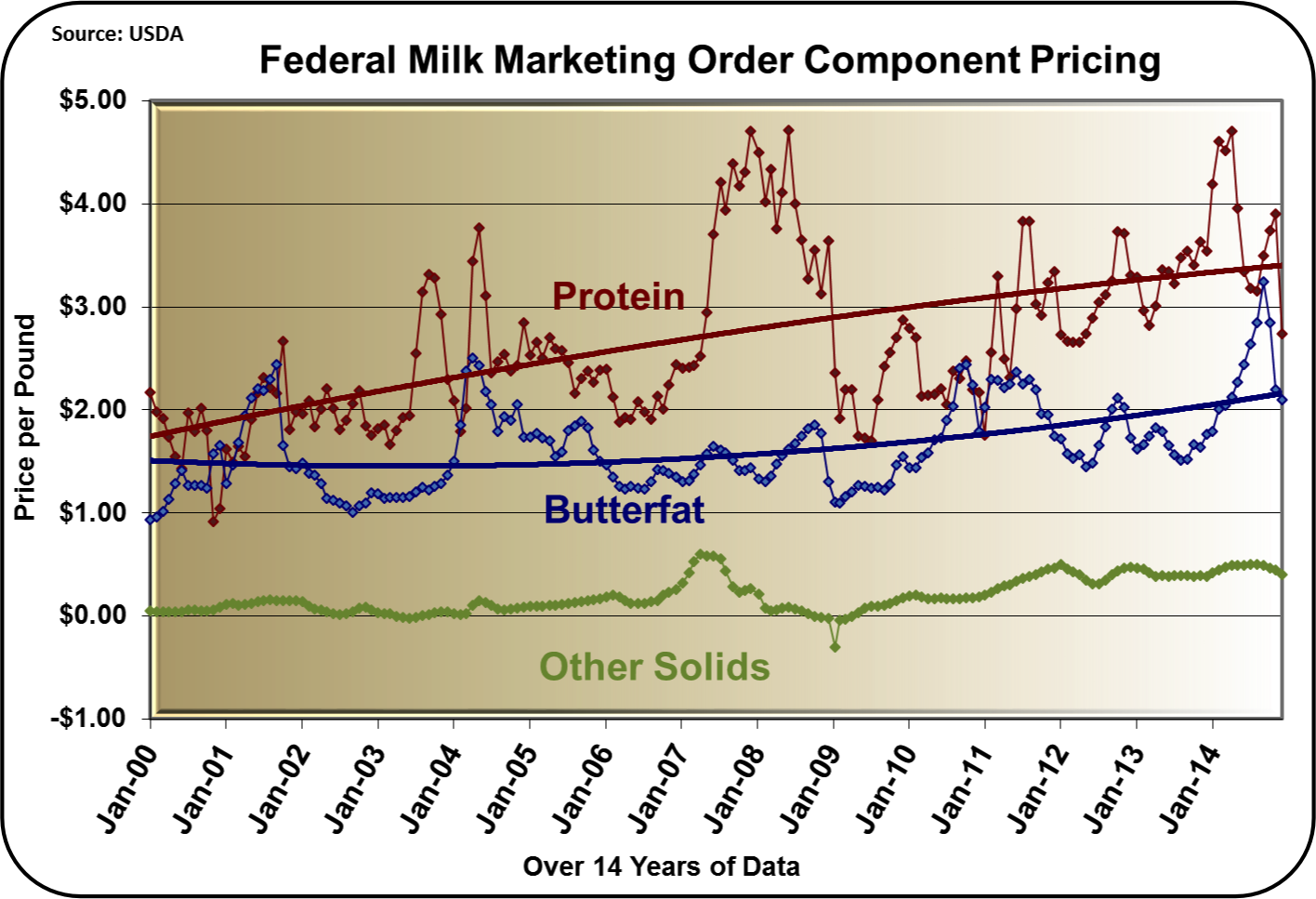The majority of US dairy producers are paid only for the value of their milk components. Except in the few markets where the majority of milk is used for drinking, water is given no value.
The producer is paid based on the weight of milk protein, butterfat, and other solids.
The chart below shows the values of each of these components as well as their trends and volatility.

Each of these milk components is given a value derived from the wholesale price of various milk products.
The underlying commodities used in the milk payment system formulas are cheese, butter, and dry whey.
The simplest formula to describe is butterfat. The value of butterfat is derived from the wholesale price of butter, less an allowance for the cost of manufacturing (churning) butter from butterfat.
The other formulas are not quite as easy to follow.
'Other solids', which includes all the components except butterfat and milk protein, is derived from the wholesale price of dry sweet whey, which is the by-product of cheese making with the water removed.
Dry whey contains lactose, whey protein, minerals, and a few minor items.
Because 'other solids' does not contain any protein, the parallel between 'other solids' and dry whey is not perfect but it is a reasonably close quantifiable commodity with prices set by the market place.
The majority of dry whey is exported, so the price is really set by international supply, demand, and competitive pricing.
The most difficult formula to understand is the formula that determines the price of milk protein.
There are two commodities in the equation that determine the price of milk protein, cheese and butter.
The cheese part is pretty simple to understand. Casein protein is key to making cheese and about 82% of milk protein is casein protein. The other part of the formula for establishing the price of milk protein is a little more difficult to understand.
Cheese is primarily made up of milk protein and butterfat. Coagulation of the protein increases the particle size so it cannot pass through the cheesecloth in manufacturing. These larger particles also prevent the butterfat from escaping.
When butterfat is sold in cheese, it is worth more than when it is sold as butter. That extra value is given to milk protein in the formulas that determine the price producers get for their milk protein.
Mathematically, that means that as the price of butter goes up, and all things else remain the same, the value of milk protein will decrease.
From the graph at the beginning of this article, the relative values are easy to follow.
Protein is by far the most valuable component in milk for the majority of US dairy producers. That is why technologies such as amino acid balancing of feed are becoming more common in the US.
For more insights into these milk payment formulas, please refer to the pricing announcements for the Federal Milk Marketing Orders.

John Geuss (left) is the editor of US dairy commodities blog, MilkPrice.
For a detailed month-by-month analysis of American dairy commodity movements, click here.
